There are many blessings that come with pregnancy, and varicose veins are one of them. If you’re experiencing pain from varicose veins this homemade relief cream will do wonders for you! I’m so glad I started making this as it helps relieve pain instantly in my ankles and legs from varicose veins. Learn how to make homemade varicose vein relief cream with this easy tutorial.
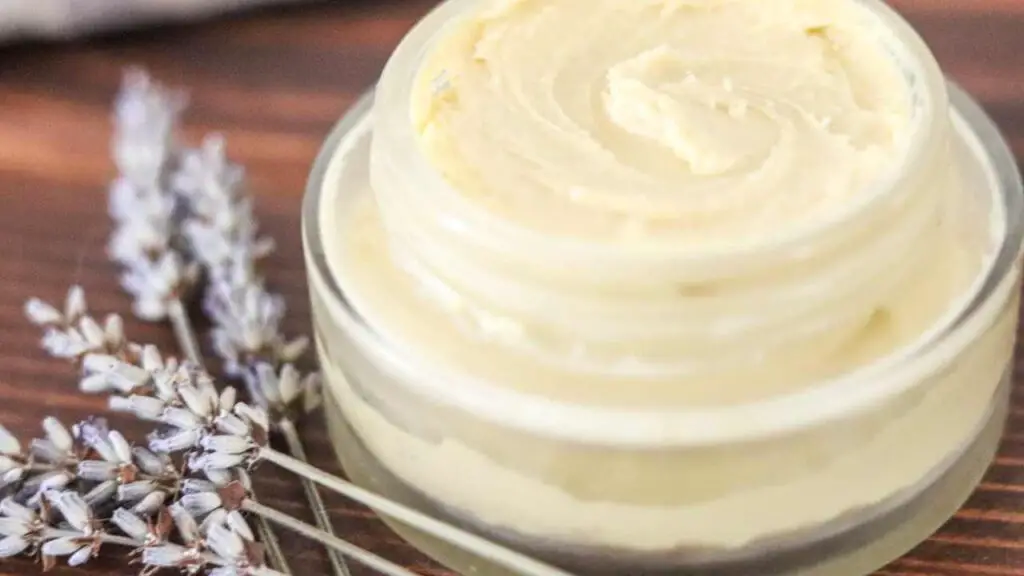
There are many blessings that come with pregnancy, and varicose veins are one of them. If you’re experiencing pain from varicose veins this homemade relief cream will do wonders for you! I’m so glad I started making this as it helps relieve pain instantly in my ankles and legs from varicose veins. Learn how to make homemade varicose vein relief cream with this easy tutorial.
PIN IT FOR LATER
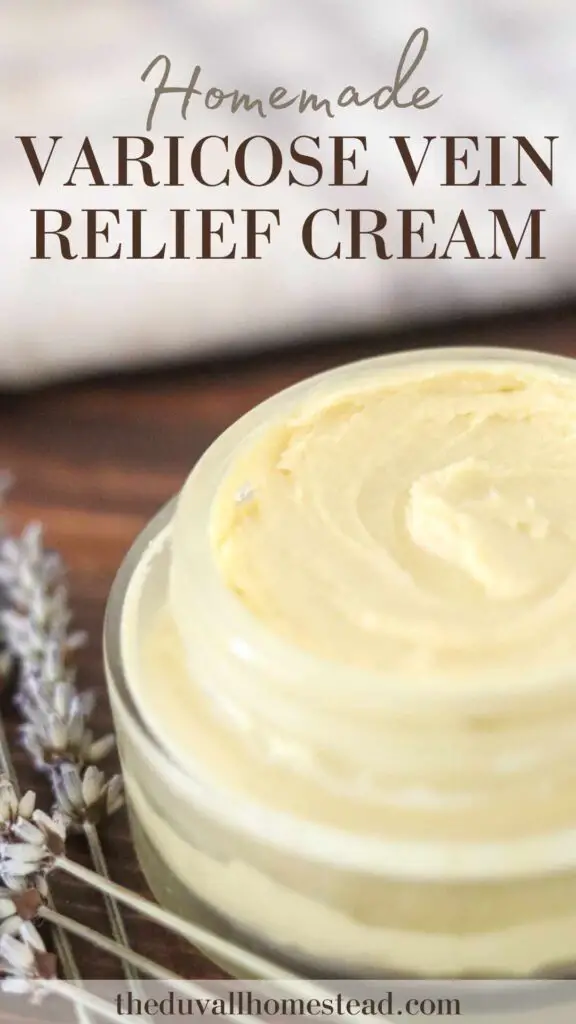
This post contains affiliate links, which means I may make a small commission off items you buy at no extra cost to you. As an Amazon associate, I earn on qualifying purchases. See my full disclosure here.
THE ARRIVAL OF VARICOSE VEINS
When I found out I was pregnant again, I was ready to go with all the natural remedies that I used in my first pregnancy, like homemade stretch mark cream and herbal anti-nausea supplements.
What I didn’t expect was that I would have an issue with varicose veins, because I didn’t have that in my first pregnancy. I did get varicose veins on my legs, but they didn’t hurt at all, so I didn’t worry about it.
This time around, I got to about 10 weeks pregnant and boom! There were the varicose veins from last pregnancy. Same ones, popping up to say hello.
A couple weeks later I started feeling a lot of pressure and discomfort on the vein areas and realized I needed to do something since I still had so much longer to go in the pregnancy.
HOW I CAME UP WITH HOMEMADE VARICOSE VEIN RELIEF CREAM
After a few conversations with my midwife, I stumbled across arnica oil and calendula oil and learned all about how those can help treat varicose veins.
I mixed those in with my already existing homemade lotion recipe, plus added a few special ingredients for added nutrients and skin benefits.
I tested the recipe a few times to get the consistency right, and voila – a homemade varicose vein relief cream that actually works and reduces pain immediately when applied.
I’m so thankful I didn’t wait to get this made because the pain definitely got worse as I became more and more pregnant. Every day these days, this varicose vein lotion provides relief for me morning, afternoon, and night. Thank goodness for that!
I hope you find just as much relief treating varicose veins with this cream as I do. And congrats on your pregnancy!
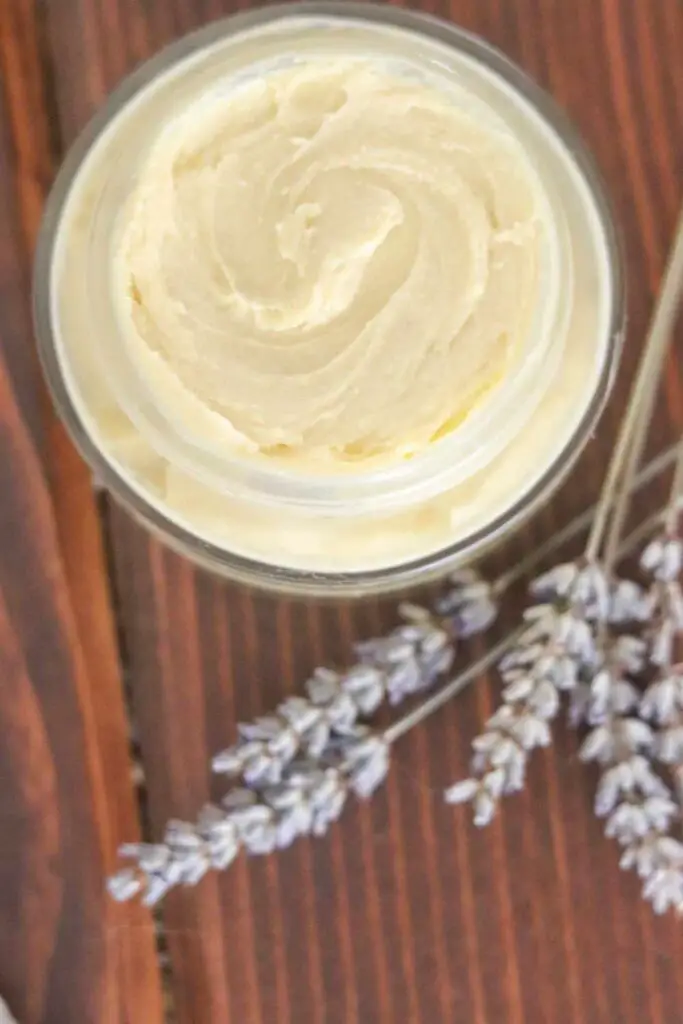
Disclosure: I am not a health practitioner, and this is not medical advice. I am sharing personal experience and findings from my own research. This post refers to pregnancy-related varicose veins only. Always talk to your medical practitioner if you have a health concern and before implementing your own health remedies.
WHAT CAUSES VARICOSE VEINS DURING PREGNANCY?
There are many joys that come with pregnancy, and varicose veins are one of them for many people. When you’re pregnant, blood volume increases progressively every week and month. Total blood volume will increase from 20% to 100% pregnancy levels.
In addition to this, your hormones are changing at a rapid and dramatic rate. The hormone progesterone specifically relaxes blood vessel walls and decreases valve function, putting you higher at risk for varicose veins.
Meanwhile, your baby is getting heavier, putting more pressure on your body and blood stream. Pressure from the baby also makes it more difficult for blood to flow from your legs back to your heart.
Pressure from the baby, relaxed blood vessels due to hormones, and the increase in blood volume creates a swollen, painful, twisted, blood clot-like feeling in parts of your body known as varicose veins or spider veins.
While varicose veins can become problematic, most of the time in pregnancy they are completely normal and harmless. They are simply extra blood pooling in your relaxed blood vessels, made worse by your growing baby. And as you progress in your pregnancy, you might notice new varicose veins popping up.
Just one more thing you get to deal with while growing the next sunshine in your life! 🙂
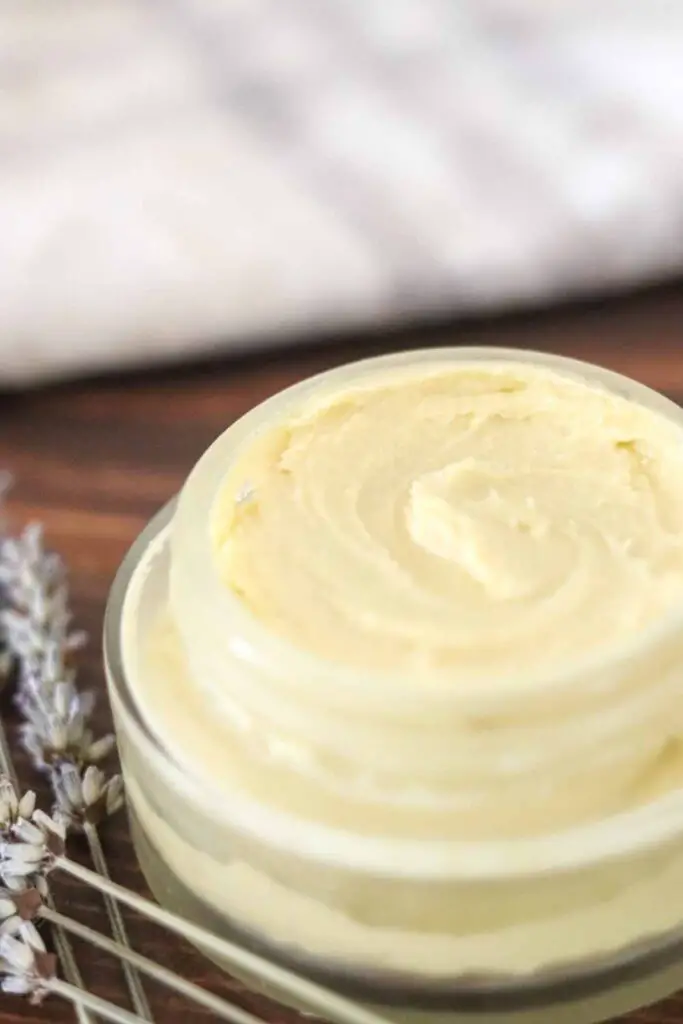
HOW TO REDUCE VARICOSE VEIN PAIN IN PREGNANCY
There are a few ways you can help varicose veins in pregnancy:
1. Maintain Good General Health
I’m not a health practitioner so this is not medical advice; however, it should go without saying that a healthy diet, regular exercise, and low stress levels will contribute to a healthy pregnancy and baby. So with that said, I try to always maintain the following, whether I’m pregnant or not:
Low sugar intake
Lots of dark green veggies like kale
Eating protein, health grain, and vegetables with every meal
Lots, and lots, and lots, of water (I drink over a gallon per day when pregnant).
Regular exercise. Exercise helps to improve blood circulation, reducing the risk or severity of varicose veins. This could be daily walks, or focused exercise for 30-60 minutes such as interval training, kick boxing, dancing, or light weightlifting. Always follow exercise with good stretching and yoga, especially when pregnant.
Lower your stress levels. Find ways to laugh often, get outside as much as possible, and get lots of sleep.
Now that we’ve covered the basics, let’s get down to specific remedies for varicose veins.
2. Natural Remedies to Decrease Varicose Vein Pain
I always turn first to natural remedies to improve health related issues, whenever possible. When researching varicose vein creams, I did find a few available for purchase that were quite expensive. I knew I could make my own homemade varicose vein relief cream with a bit of practice, and here are the key ingredients I discovered:
Arnica Oil Benefits
Arnica is an herb found around the world that has been used for many years in the treatment of swelling-related issues, such as bruises and arthritis. The oil is used on the skin to relieve muscle aches, joint pain, wounds, and swelling from broken bones.
The anti-inflammatory properties of arnica help reduce the pain of varicose veins. What I love about arnica is it works instantly, so it’s a great herb to put into homemade lotions or creams to treat varicose vein pain.
You can find arnica oil from Amazon here.
This oil should only be used topically on the skin and should not be taken internally when pregnant.
Calendula Oil Benefits
I’ve always been a big fan of calendula. I’ve used it on myself, my baby, my husband for wound treatment, and so much more. It is an amazing healer!
Calendula oil is another anti-inflammatory that is also used to heal wounds and soothe skin irritations like eczema and diaper rashes. It also has anti-fungal and antibacterial properties, making it a good oil to put in homemade lotions for clean, healthy skin.
Calendula oil can be hard to find. For this recipe I actually used a calendula tincture, but it would be best to use homemade calendula oil from flowers. If you grow calendula, learn how to make calendula oil here.
Dried calendula flowers also go great in homemade bath tea, another way to soothe the skin and relax after a busy day of being pregnant.
Shea and Cocoa Butter Benefits
Shea butter and cocoa butter are both well known for their skin benefits. Both contain high levels of vitamins and antioxidants, and are incredibly soothing to the skin. They relieve dry skin, reduce skin irritations, and contain anti-aging properties.
This is why I opt for one of these butters in my homemade all-purpose skin lotion (also good at reducing stretch marks in pregnancy). They are excellent on the face, body, hands, and just a great all-purpose butter in homemade skin products.
The shea and cocoa butter in this recipe can be used interchangeably. I like to combine them for added benefits, but if you only have one or the other, you can substitute for either one.
Tallow Benefits
I was very excited to introduce tallow to my natural remedy / homemade medicine cabinet this year.
Tallow is rendered fat, in this case from cattle. The fat is called “suet” and refers to the nutrient-dense fat that surrounds the cow’s organs.
The process of rendering beef fat into tallow removes all the impurities and what’s left is a highly nutritious fat that can be used in cooking or absorbed into the skin via homemade skin products.
I didn’t have quite enough beef bones on hand to make my own tallow, although I would have loved to. Luckily you can find grass-fed tallow on Amazon here.
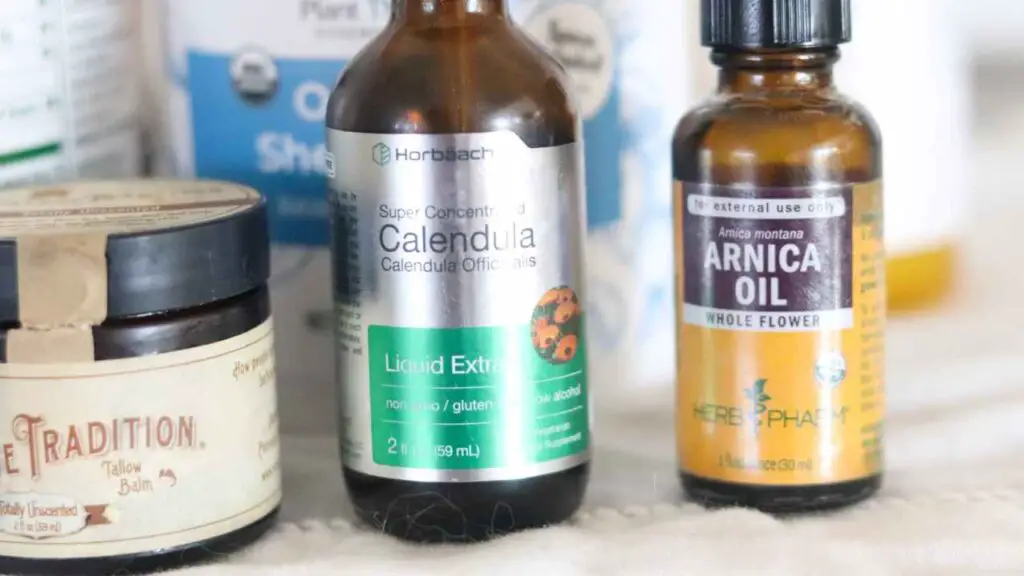
Tallow can provide many skin benefits, just like health fats can provide health benefits when consumed. Because of lipids found in tallow, tallow can help prevent dryness in the skin at the cellular level without suffocating the skin’s barrier like petroleum-based lotions do.
This miracle fat also contains anti-aging properties. Beef tallow, rendered from grass-fed cattle, is loaded with vitamins A, D & K and antioxidants. One of which is vitamin E, known to promote rejuvenation of the skin by fighting free radicals that can cause wrinkles.
Lastly, tallow is an intense moisturizer. I found myself wishing I had more of it because it feels so good going on the skin in this recipe for homemade varicose vein relief cream. It is far superior to cocoa butter and shea butter in my opinion. If you’re lucky enough to have a lot of it on hand for yourself, throw as much of it as you can in this recipe!
Essential Oils for Varicose Veins
Lastly but certainly not least, essential oils are a big relief when it comes to varicose veins.
Specifically, lavender essential oil, frankincense essential oil, and helichrysum essential oil.
All three of these oils help aid in reducing inflammation, calming the skin, and reducing pain from bruises and wounds. In my personal experience, lavender and frankincense provide a moderate relief, while helichrysum provides a stronger relief for varicose veins. That is why I put all three in this recipe for homemade varicose vein relief cream. They are my top three essential oils for pain relief and overall health, and they make a great powerhouse for this recipe!
Helichrysum essential oil can be expensive, but you can buy a diluted version here. This is because helichrysum contains special properties that make it an antioxidant, an antibacterial, an antifungal and an anti-inflammatory. As such, it can be used in dozens of different ways to boost health and ward off disease. Some of its most popular uses are for treating wounds, infections, digestive problems, supporting the nervous system and heart health, and healing respiratory conditions. Read more about helichrysum here.
You can get all 3 oils at a wholesale discount here.
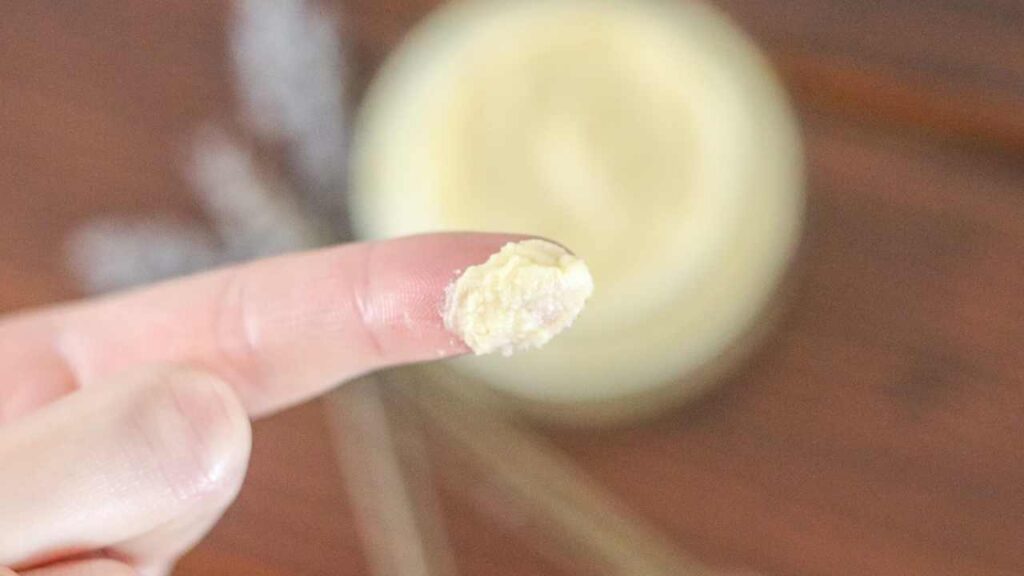
OTHER REMEDIES TO REDUCE VARICOSE VEIN PAIN IN PREGNANCY
In addition to natural remedies, here are a few other ways to reduce varicose vein pain during pregnancy:
4. Wear Compression Socks
Don’t be afraid of compression socks. If you are like me and hesitant to do this, I would just say at least buy them and have them on hand. You don’t have to wear them every day, but you want to have them when you need them. I like to wear compression socks if I’m going for a long walk, or say out to a fair all day with the family where I’ll be up and walking and active. Especially in the summer heat, the varicose veins on my ankles hurt badly if I’m up and at ‘em all day. Other days, I can skip wearing them.
5. Exercise!
Now this sounds counterintuitive to my last point, but exercise does help. Exercise makes everything better when pregnant, in my opinion. I like to do an hour of exercise in the morning (without compression socks), and then rest or just be lightly active the rest of the day. Even if my varicose veins are hurting, I still exercise and the pain will go down by the end of the workout. This is different than running errands all day, where you are walking, standing, lifting groceries or toddlers, etc., all of which would feel worse without compression socks. Hopefully that makes sense, and again, this is just my experience!
6. Soak feet in cold water
The other day we were at a festival in town by the river, and even with compression socks, my varicose veins were still hurting pretty bad. We live in an area with a lot of mountain snow run-off, and all that cold snow is melting into our local river now. So the river is freezing cold, which is perfect for varicose vein pain. I just took my socks off and went in about knee-deep, and boy did it feel amazing. All the pain and swelling was gone for at least several hours. A winning strategy in my book!
7. Elevation!
Now this one is tricky in my opinion, and here’s why. Yes, elevating your leg (if your varicose veins are in your legs or ankles) will 100% help. In fact it will eliminate the varicose vein entirely! But, as soon as you put your leg back down, they come right back. So yes, it’s good to put your foot up on a stool or the couch when you’re sitting down, or if the pain is just unbearable. It’s an instant cure, since it’s literally sending the blood back to your heart using gravity. However, it’s not exactly a long-term solution, and you also don’t want to be hanging out with your legs higher than your heart a whole lot during pregnancy anyway. So it’s probably my least favorite method!
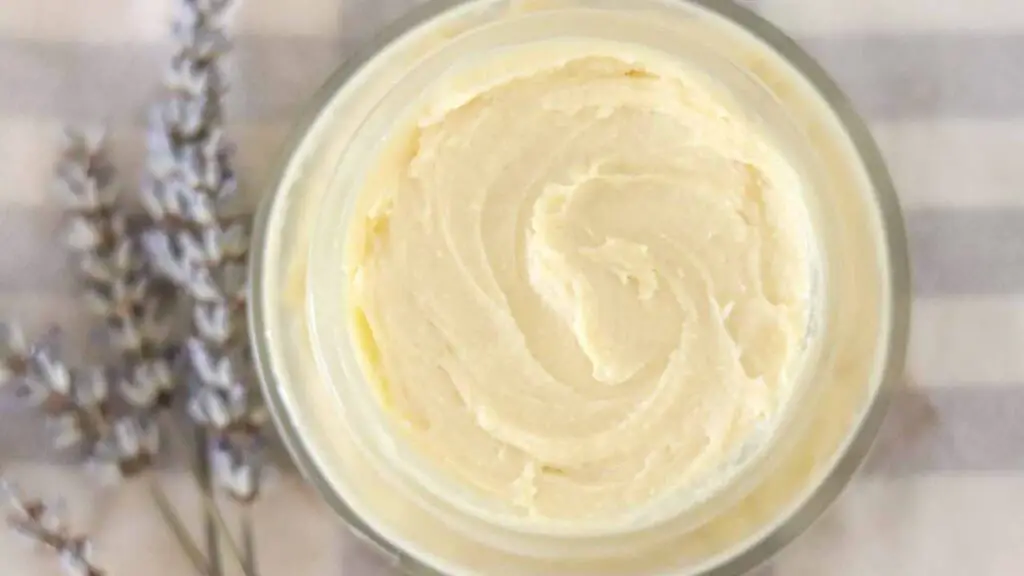
TIPS FOR USING HOMEMADE VARICOSE VEIN RELIEF CREAM
I have to say this homemade recipe surprised me, in a good way, for how well it worked! Usually, natural remedies provide a mild support or relief, but this one surpassed that expectation. It’s officially a life saver and I can’t wait for you all to try it. Here are my tips for using homemade varicose vein cream.
First, don’t skimp out on the ingredient list! I know this list is long and this could be made with fewer ingredients (see my substitutes paragraph, below). But the ingredient list is truly a magical cocktail, and I can’t say the cream would work without everything listed below. So try to use as much of these ingredients as you can!
Second, I find the most success applying this lotion first thing before getting out of bed, at least once after lunch time, and then lastly before sleeping for the night. I apply a good amount directly to the varicose vein pain area, and any remaining cream on my fingers goes in the surrounding areas. For me, the pain is at the ankle, and I will sometimes spread more lotion up to the calf/shin area as well.
Third, keep the varicose vein cream in a cool, dry location. It doesn’t have to be refrigerated, but it shouldn’t be baking in the sun either. I keep mine next to my bed on my nightstand.
Variations On The Recipe for Homemade Varicose Vein Relief Cream
For me, I had most of these ingredients on hand already. Actually, I think all of them. But if you don’t, here are a few ways you can change the ingredients so you’re not having to buy all of this at one time.
Use only cocoa butter or shea butter, not both. So in this case you could use 1/2 cup shea butter or cocoa butter, for example.
Instead of jojoba oil, you can use any other career oil, like fractionated coconut oil, avocado oil, or olive oil, just to name a few.
Definitely do not skip the arnica oil and calendula oil. These are the top two ingredients that provide relief.
If I could only pick one essential oil for this recipe, it would be helichrysum. However, I wouldn’t recommend skipping any of the three listed here because I love them all!
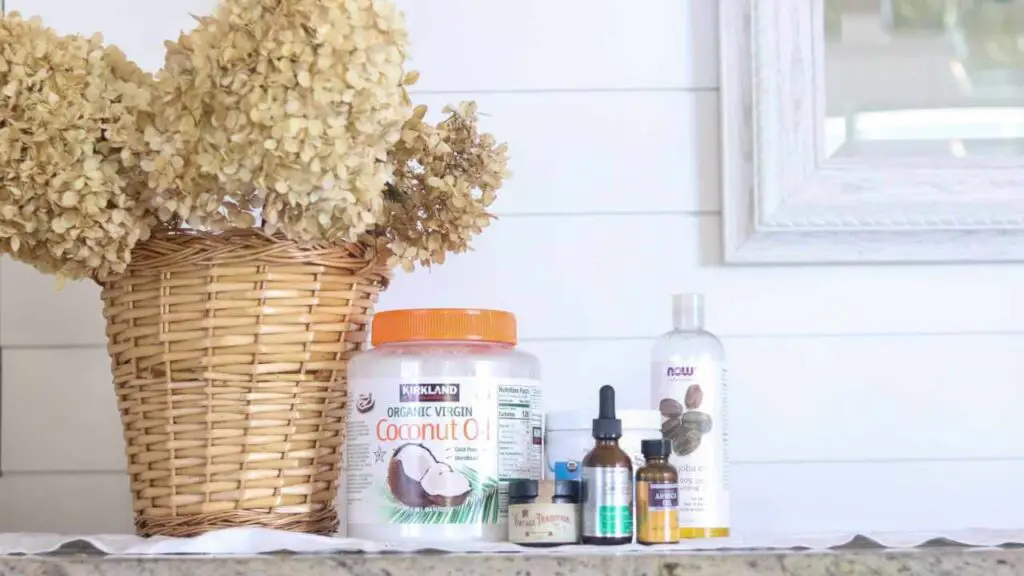
HOMEMADE VARICOSE VEIN RELIEF CREAM INGREDIENTS
(Makes about 4 ounces of cream)
1/4 cup cocoa butter
1/4 cup shea butter
2 tbsp coconut oil
3 tbsp jojoba oil
2 tbsp, or approximately 1 ounce, tallow balm
2 tbsp each of arnica oil and calendula oil
10-15 drops essential oils (optional):
5 drops each of lavender essential oil, frankincense essential oil, and helichrysum essential oil
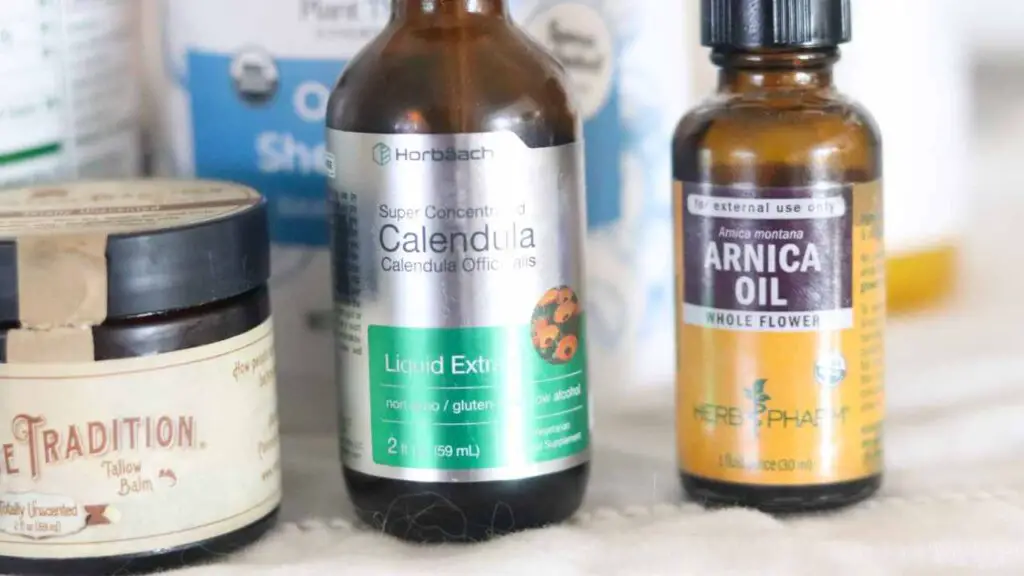
HOW TO MAKE VARICOSE VEIN RELIEF CREAM
Create a double boiler on the stove by placing a large bowl over a stovetop pot with 1 inch of water in it.
Heat the water up to boiling. Meanwhile, add the cocoa butter, shea butter, coconut oil, jojoba oil, and tallow balm to the bowl.
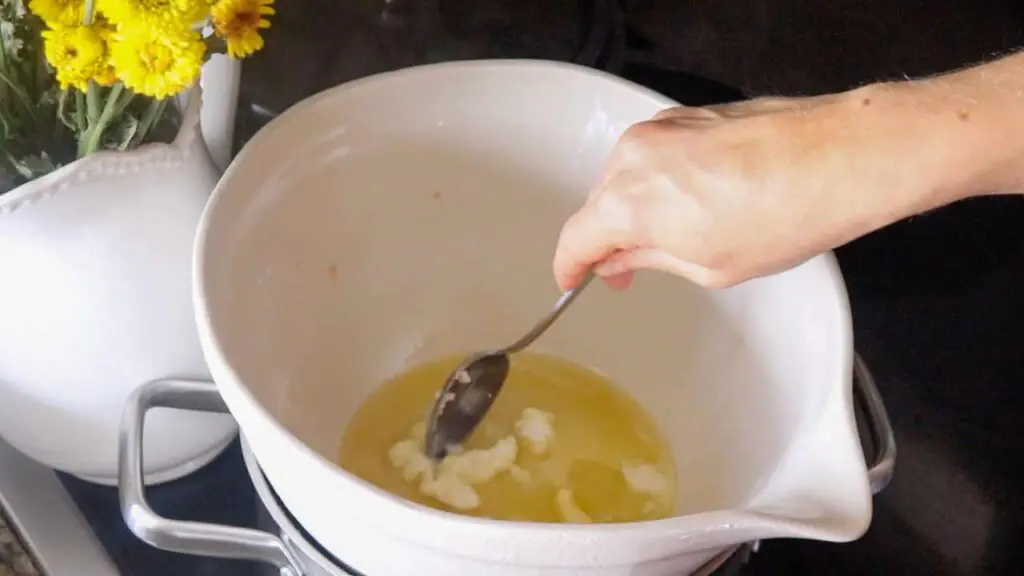
Stir with a spoon until fully melted, then remove from heat.
Let cool for 5-10 minutes.
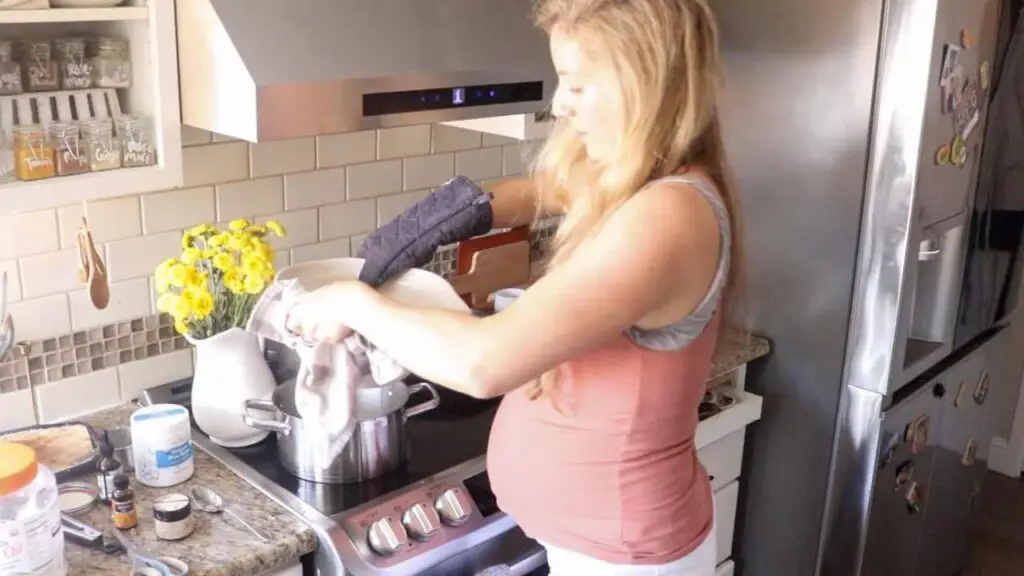
Then add the arnica oil, calendula oil, and essential oils and stir to combine.
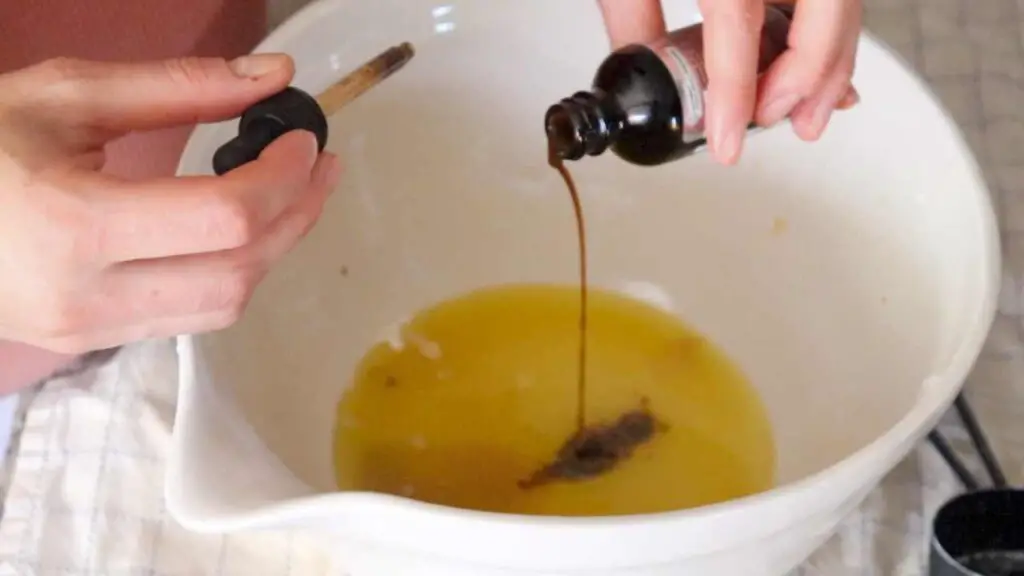
Let the mixture sit on the counter for 12 hours, or accelerate this step by placing it in the fridge for 3-4 hours. Once removed from the fridge, mix all the ingredients with a hand mixer. This is how you get a nice whipped and spreadable texture in your cream.
Note: the mixture may become more runny if it is over 70 degrees in your house. On the flip side, if it’s colder in your house, the mixture might be more firm. It works great either way. To firm it up, simply place in the fridge. If it is too firm, let it warm up to room temperature before mixing.
After mixing, spoonful the cream into a glass lotion jar. I like this one from Amazon but any sealed jar will do.
Enjoy!
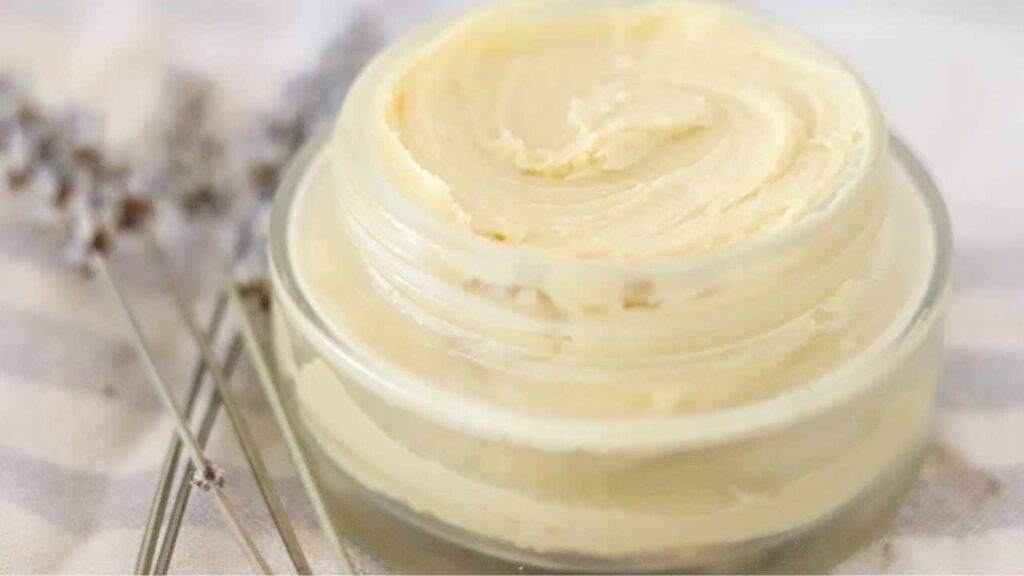
FAQ
How do you get rid of varicose veins during pregnancy?
Varicose veins will go away naturally after pregnancy. If they don’t, and the appearance still bothers you, you can have them cosmetically removed. However, the pain should significantly go away after pregnancy.
With that said, you cannot get rid of them during pregnancy, at least not naturally. The best thing to do during pregnancy is treat them naturally with a homemade varicose vein relief cream, eat healthy foods and drink plenty of water, wear compression socks, exercise, do cold water foot soaks, and elevate your feet when necessary.
Are varicose veins bad during pregnancy?
No. Varicose veins are completely normal during pregnancy. With that said, they can create a problem in rare cases. Always make sure your veins are not hot to the touch or hard like a blood clot. And of course, always have your health practitioner monitor your varicose veins for safety.
How can I prevent varicose veins from getting worse during pregnancy?
You can apply a varicose vein relief cream several times per day to relieve pain. Also you can soak your feet in cold water, elevate your legs, or wear compression socks to help ease the pain. Luckily, most varicose veins go away after pregnancy.
MORE NATURAL PREGNANCY AND BABY FROM THE HOMESTEAD
Protein Pregnancy Muffins for Maternity
Summer Maternity Capsule Wardrobe
Freezer Meals to Prep Before Baby
PIN IT FOR LATER!


Varicose Vein Relief Cream
Pregnancy comes with many blessings, and varicose veins was one of them for me. Learn how to make homemade varicose vein relief cream at home with this easy recipe. You can apply this multipe times per day for instant relief to varicose veins.
Ingredients
- 1/4 cup cocoa butter
- 1/4 cup shea butter
- 2 tbsp coconut oil
- 3 tbsp jojoba oil
- 2 tbsp, or approximately 1 ounce, tallow balm
- 2 tbsp each of arnica oil and calendula oil
- 10-15 drops essential oils (optional):
- 5 drops each of lavender essential oil, frankincense essential oil, and helichrysum essential oil
Instructions
- Create a double boiler on the stove by placing a large bowl over a stovetop pot with 1 inch of water in it.
- Heat the water up to boiling. Meanwhile, add the cocoa butter, shea butter, coconut oil, jojoba oil, and tallow balm to the bowl.
- Stir with a spoon until fully melted, then remove from heat.
- Let cool for 5-10 minutes.
- Then add the arnica oil, calendula oil, and essential oils and stir to combine.
- Let the mixture sit on the counter for 12 hours, or accelerate this step by placing it in the fridge for 3-4 hours. Once removed from the fridge, mix all the ingredients with a hand mixer. This is how you get a nice whipped and spreadable texture in your cream.
- Note: the mixture may become more runny if it is over 70 degrees in your house. On the flip side, if it’s colder in your house, the mixture might be more firm. It works great either way. To firm it up, simply place in the fridge. If it is too firm, let it warm up to room temperature before mixing.
- After mixing, spoonful the cream into a glass lotion jar. I like this one from Amazon but any sealed jar will do.
- Enjoy!
Notes
I always like to apply this cream morning and night, but you can apply it anytime to relieve varicose vein pain. Note: This is not medical advice. Discuss with your health provider before using if pregnant.
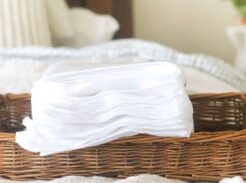
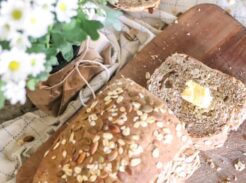
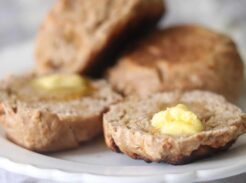
Leave A Comment